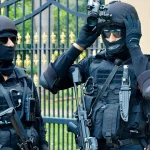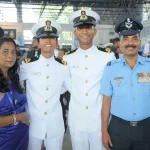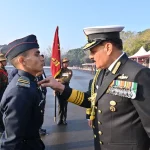The choice between the National Defence Academy (NDA) and the Military Nursing Service (MNS) represents a significant decision for individuals aspiring to serve in the Indian Armed Forces. Each pathway offers its distinct requirements, career trajectories, and personal fulfillment based on one’s interests and career aspirations. This comprehensive exploration will dissect the nuances between these two esteemed institutions to aid prospective candidates in making an informed decision that aligns with their personal and professional goals.
Introduction
The armed forces serve as the backbone of a nation’s security and welfare, with various roles contributing to its operation. Among these crucial roles, the NDA and MNS stand out as gateways for individuals attracted to military service. While the NDA prepares future leaders and combatants across various branches of the armed forces, the MNS focuses solely on cultivating skilled nursing professionals dedicated to providing healthcare within the military framework. By assessing key dimensions—gender eligibility, educational requirements, training, salary, and career trajectories—we can discern which pathway may be more conducive to your aspirations.
Historical Context
The establishment of the National Defence Academy dates back to October 1, 1954, aimed at providing a comprehensive platform for training future military officers across the Indian Army, Navy, and Air Force. The academy operates under the auspices of the Indian Army, with its curriculum emphasizing not only military tactics but also leadership, strategic thinking, and physical fitness.
Conversely, the evolution of the Military Nursing Service aligns with the historical necessity of healthcare provision in military settings, especially during wars and extensive military operations. Formed to address the health needs of service members and their families, the MNS now stands as a vital arm of the Indian Defence that combines military discipline with healthcare expertise.
Main Sections
1. Key Differences Between NDA and MNS
| Criteria | NDA | MNS |
|---|---|---|
| Gender Eligibility | All genders | Only females |
| Educational Requirement | 12th pass/appearing (any stream) | 12th pass with Biology and English, + NEET qualification |
| Age Limit | 16.5 to 19.5 years | 16 to 24 years |
| Exam Conducting Body | UPSC (Written + SSB Interview) | NEET (UG) score + CBT + Interview |
| Seats Available (Approx.) | ~400 annually | 220 annually |
| Applicants (Approx.) | ~600,000 annually | ~100,000 annually |
| Selection Ratio | 1 in 1500 | 1 in 455 |
| Training Duration | 3 years at NDA + specialized training | 4-year B.Sc Nursing program |
| Training Focus | Combat, military tactics, leadership | Nursing fundamentals and clinical healthcare |
| Career Role | Commissioned Officers in Army, Navy, Air Force | Military Nursing Officers providing healthcare services |
| Commission Type | Permanent Commission | Permanent and Short Service Commission |
| Salary | Higher pay scale with allowances including MSP | Competitive salary; slightly lower than NDA |
| Reservation Policy | None | 15 SC/ST seats & 25 for NCC ‘C’ certificate holders |
| Uniform | Service-specific military uniforms | Beige uniform indicating nursing role |
| Facilities | Mess, canteen, accommodation, ECHS benefits | Similar facilities to NDA |
| Post-Service Benefits | Pension, promotions, advanced training opportunities | Pension, promotions available |
2. Educational and Gender Eligibility
The educational requirements for NDA and MNS differ significantly, reflecting their respective roles in the armed forces.
- NDA: Candidates must have completed the 12th grade in any stream, whether it is Science, Commerce, or Arts. The age limit is structured to accommodate young aspirants aged between 16.5 and 19.5 years, allowing fresh school leavers to enter a career in the military.
- MNS: Exclusively open to female candidates, the MNS requires aspirants to pass their 12th grade with a focus on Biology and English, and they must also qualify for the NEET (National Eligibility cum Entrance Test) for admission into nursing programs. Eligible females must be between 16 to 24 years old—a narrower age range that reflects the program’s dedication to healthcare services.
3. Exam Structure and Selection Process
- NDA: The examination administered by the Union Public Service Commission (UPSC) includes a written test followed by an SSB (Services Selection Board) interview. The written test encompasses subjects like Mathematics and General Ability, designed to evaluate a candidate’s academic competence. The high selection ratio, approximately 1 in 1500, highlights the intense competition and the need for meticulous preparation.
- MNS: Candidates for the MNS utilize their NEET scores as a basis for selection, in addition to taking a Computer-Based Test (CBT) followed by an interview. This multistage process ensures that only the most suitable candidates proceed to service, with a comparatively easier selection ratio of 1 in 455.
4. Training Regimens
Training programs for NDA and MNS are distinct in their duration, focus, and outcomes.
- NDA: Comprising a 3-year intensive training regimen, NDA cadets undergo rigorous sessions focusing on academics, physical fitness, and military tactics. The training prepares them for combat, leadership, and specialized military roles, ensuring a well-rounded development as future officers.
- MNS: In contrast, the MNS requires a 4-year B.Sc Nursing program where students receive comprehensive training in nursing fundamentals, clinical sciences, and hands-on care practices. The training emphasizes competency in a healthcare environment, with an orientation towards military healthcare settings.
5. Career Opportunities and Responsibilities
- NDA: Graduates from NDA commission as officers in the Indian Army, Navy, or Air Force, taking on diverse roles that encompass logistics, administration, intelligence, and combat. They partake in various leadership roles and are often tasked with critical strategic responsibilities, reflecting their comprehensive military training.
- MNS: Nurses in the MNS commission as Lieutenants and focus on providing essential healthcare services within military hospitals and during field operations. Their responsibilities encompass patient care, medical support in emergencies, and contributing to the overall health services of the armed forces.
6. Salary and Allowances
Salary structure remains a pivotal concern for aspirants considering either program:
- NDA officers receive a higher salary scale with extensive allowances, including Military Service Pay (MSP), thereby reflecting their combat-oriented roles and responsibilities. Their salary structure not only meets basic financial needs but provides a sense of security and stability, encouraging commitment to a military career.
- MNS officers receive a competitive yet comparatively lower salary than NDA officers. However, they still benefit from allowances and have the assurance of a stable and rewarding career in military healthcare, which includes opportunities for advancement.
Challenges to Consider
Both NDA and MNS present unique challenges:
- From a competitive standpoint, while NDA has a daunting selection ratio, the preparation demands an exhaustive commitment and can lead to stress among candidates. The rigorous training is equally demanding, pushing physical and mental boundaries.
- For MNS candidates, the intense focus on nursing education necessitates a robust dedication to healthcare and science, which may not appeal to individuals disinterested in medical fields.
Future Trends and Opportunities
As the Indian Armed Forces navigate the complexities of modern warfare and humanitarian efforts, the demand for skilled military professionals will evolve.
- NDA roles may increasingly encompass information technology and cybersecurity expertise due to the rise of digital threats. This creates an opportunity for graduates who can blend traditional military training with technological advancements.
- MNS personnel are likely to find expanded roles in trauma care and mental health as the scope of military medicine grows to address not just physical health but also the psychosocial aspects of soldier care.
Conclusion
Choosing between NDA and MNS is a decision that reflects personal ambitions, educational qualifications, and career aspirations. NDA offers a pathway for those interested in leadership and combat roles, while MNS caters specifically to females pursuing healthcare careers within the military framework. As you weigh your options, consider the challenges ahead, the fulfillment of service, and the future opportunities available.
Whether you aspire for the rigors of military leadership through NDA or intend to care for those who serve through MNS, both paths promise rewarding careers grounded in dedication to the nation. Your next step should align with your values, passion, and commitment to serving India through its esteemed Armed Forces, ensuring you choose a path that resonates with your life goals.
For those ready to embark on this esteemed journey, platforms like SSBCrack and SSBCrackExams provide critical resources, study materials, and preparation courses designed to help you succeed in your chosen path. Whether aiming for the NDA’s competitive exams or the MNS pathway, commit to rigorous preparation, as your future role in the India Armed Forces awaits.












